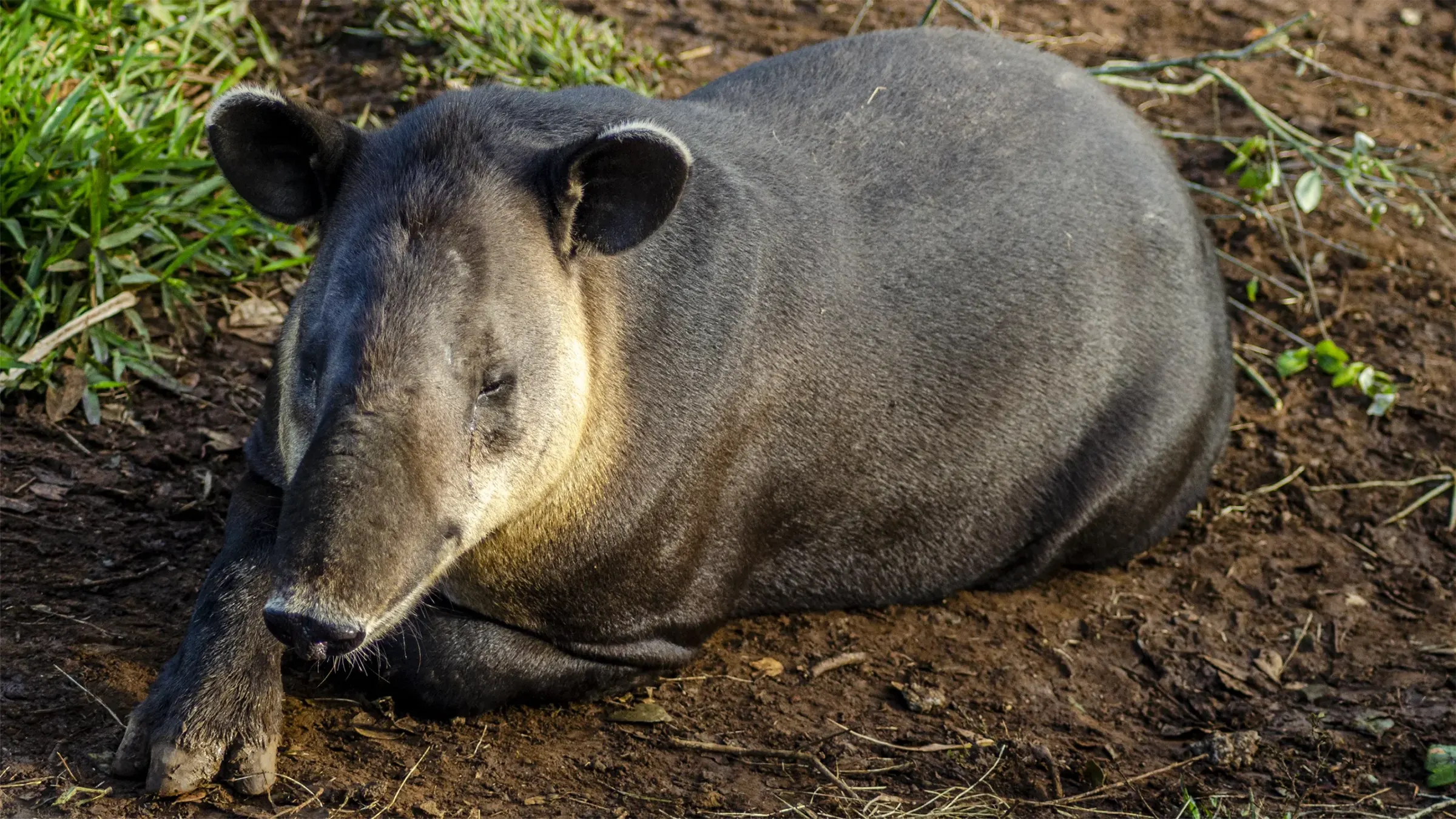Tapir or Danto in Honduras

The Danto or Tapir as it is known in Honduras is a mammal that is part of our Honduran fauna. It is of the genus of perissodactyla mammals of the family Tapiridae. In Honduras, the Tapirus bairdii is native to our land.
Similar to domestic pigs, they stand out for having a long snout in the shape of a small proboscis, used to feed on herbs and roots that constitute their main food.
Their trunk is very useful for feeding on aquatic plants in the swamps that are usually their preferred habitats. Males use it for mating fights against rivals.
Related to horses, donkeys, zebras and rhinos, they are believed to have existed for 40 million years. A unique characteristic of the Tapir is that they do not have knees on their legs.
There are 5 species of Tapir:
- Baird’s tapir, Tapirus bairdii (The one currently living in Honduras)
- Brazilian tapir, Tapirus terrestris
- Malayan tapir, Tapirus indicus
- Mountain tapir, Tapirus pinchque
- Kabomani tapir, Tapirus kabomani (Discovered in 2013 in the Amazon between Brazil and Colombia)
Baird’s tapir (Tapirus bairdii) native to Honduras
The Baird’s Tapir also known as the Central American or Northern Tapir (Tapirus bairdii ) was first identified by naturalists Spencer Fullerton Baird, in Mexico in 1843. And its territory goes from southern Mexico to northern Ecuador.
It is dark brown in color with a distinctive cream color starting from the throat to the face with a dark spot on each cheek, behind and below the eye. They have a plump body, with a vestigial tail, and like all other tapir species, they have a cream-colored proboscis snout, with four hooves on the front legs and three on the back legs.
Es la mayor de las cuatro especies en América, llega a medir entre 1.8 y 2.5 metros de longitud con una pequeña cola de entre 4 a 9 cm de largo, y entre 0.70 a 1.20 metros de altura. El adulto llega a pesar entre 150 a 400 kilogramos.

Danger of extinction
In 2002, the IUCN reclassified the Baird’s Tapir as endangered due to a future decline in habitat loss and fragmentation, and hunting. It is estimated that the population decline is greater than 50% in the 3 passing generation (33 years).
There is evidence that suggests that infectious diseases may contribute to the decline of the species in the future, such as cases already found where there is grazing of cattle.
The current total population estimate of this species is 5,000 mature individuals. Extensive changes in habitat can be shocking and fragment currently viable populations.
It is estimated that around 70% of the forest areas of Central America have been lost due to deforestation and disturbance in the last 50 years. This habitat fragmentation, along with hunting and cattle grazing, will further increase the pressure for the survival of Baird’s tapirs in the wild.
In Honduras it is possible to meet them at the Joya Grande zoo.
April 27 International Tapir Day
April 27 is designated as the International Day of the Tapir, a mammal that inhabits our Honduran forests, and is native to all of Central America, South America and Southeast Asia.
Honduras has a group of volunteers who work for the Conservation of the Tapir. The ProTapir Group – If you want to join and collaborate visit https://www.facebook.com/TapirHonduras
To create awareness about the danger of this species, a world organization called World Tapir Day has been formed.
More information about World Tapir Day
Web: https://www.tapirday.org/
Facebook: https://www.facebook.com/WorldTapirDay


